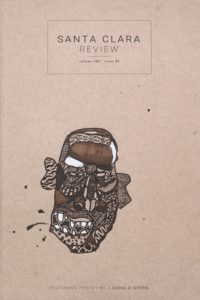Most moths are thin, tiny, and fly towards illumination and pollinate. When the 25-page softback-pamphlet from County Cavan, Ireland landed in my mailbox in Albuquerque, I was intrigued at the journal’s similarity to its namesake. Upon first flip through The Moth, it’s clear they take their art seriously—a photo of gold fish bowl with a bullet hole by Robert C. Jackson entitled “Rotten Escape,” Pat Perry’s “In the Yard,” ink sketches, Diaz Alamá’s haunting portraits of stunning muses and Wen Wu’s cover art, “Wild Swan,” which captures the profile of serene femininity—prepare the reader for a look into the finer side of life. The detail, delicacy and craftsmanship of the selected art, supported by the power of the prose, make it clear from first glimpse, The Moth is not just another freebee-wannabe stacked-by-the-coffee-shop-door listings pile selling ad space and flavor-of-the-week. This tiny journal is flying towards the light. Continue reading “The Moth – Autumn 2015”

